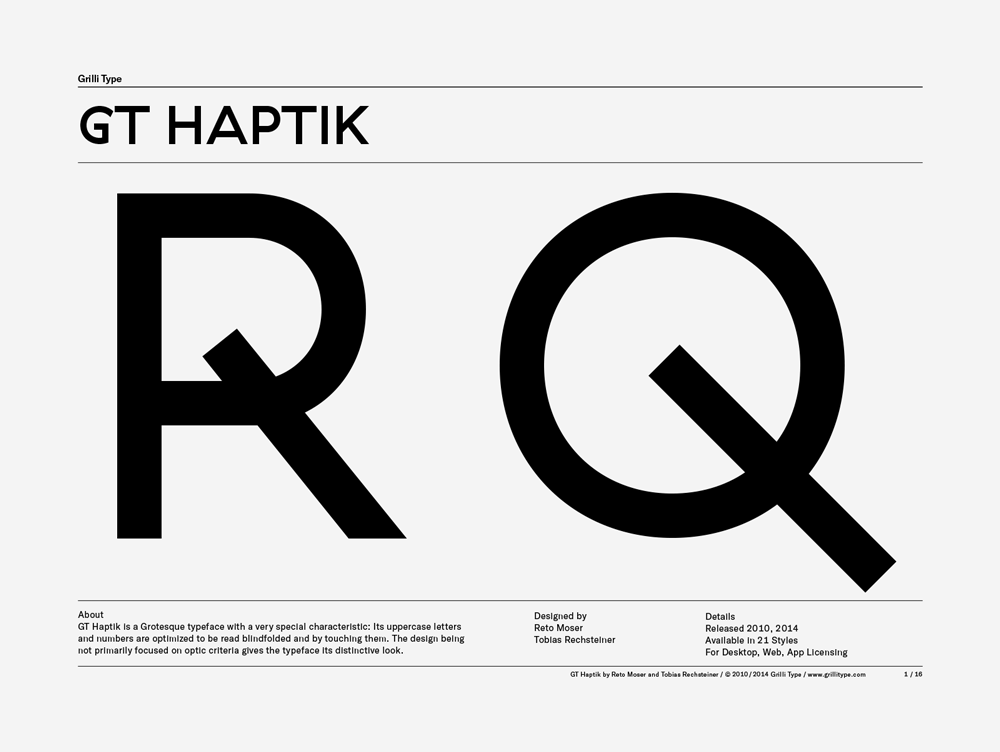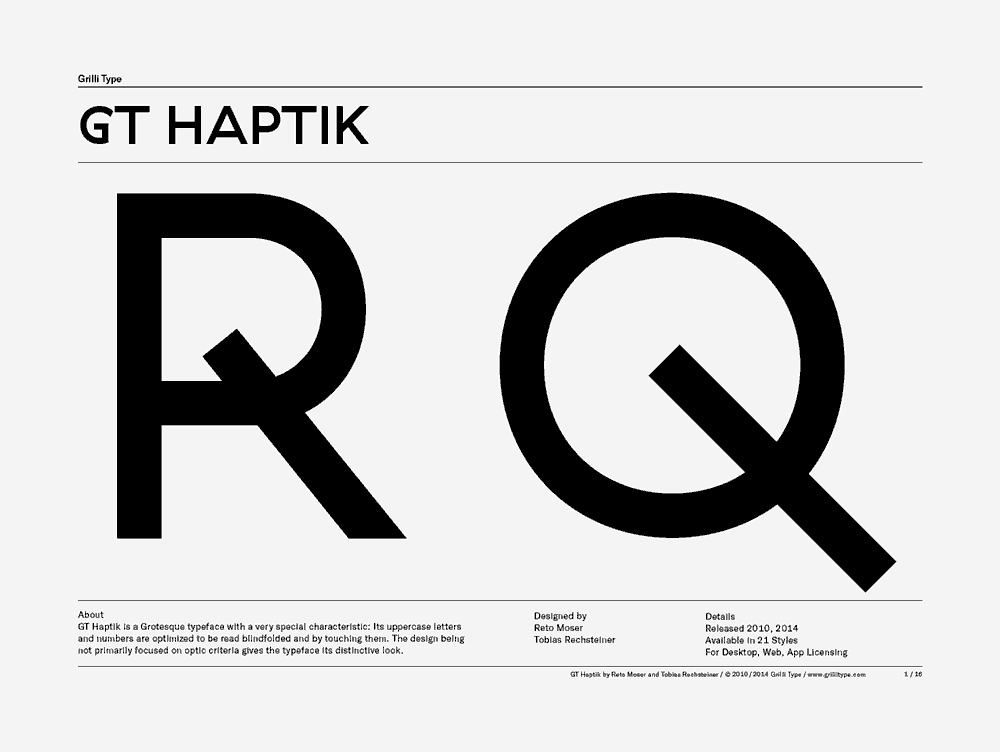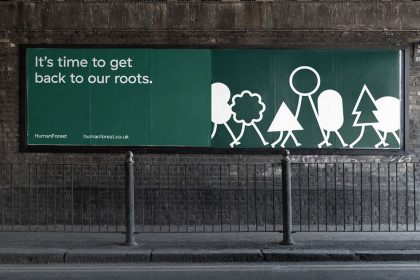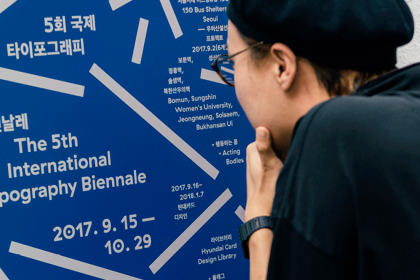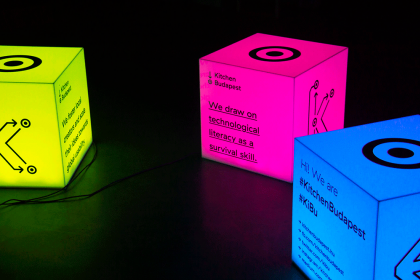GT Haptik
Family overview
- Lazer Oblique Rotalic
- Thin Oblique Rotalic
- Light Oblique Rotalic
- Regular Oblique Rotalic
- Medium Oblique Rotalic
- Bold Oblique Rotalic
- Black Oblique Rotalic
- LazerThe Scream, 1893, by Edvard Munch
- Lazer ObliqueThat’s good when you know you’re down
- Lazer RotalicThe Starry Night, 1889, by Vincent van Gogh
- ThinGet me outta here u can’t touch this
- Thin ObliqueMona Lisa, c. 1503–1519 by Leonardo da Vinci
- Thin RotalicStarry Night over the Rhone, c.1888, by Vincent van Gogh
- LightWhy you standing there man u can’t touch this
- Light ObliqueI told you homeboy u can’t touch this
- Light RotalicMy-my-my-my music makes me so hard makes me say oh my Lord
- RegularStarry Night over the Rhone, c.1888, by Vincent van Gogh
- Regular ObliqueSchool of Athens, c. 1510 by Raphael
- Regular RotalicLa Trahison des Images (Ceci N’est pas une Pipe), 1928–29 by Rene Magritte
- MediumAmerican Gothic, 1930 by Grant Wood
- Medium ObliqueDance to this and you’re gonna get thinner. Fresh new kicks and pants
- Medium RotalicThat’s good when you know you’re down
- BoldGirl with a Pearl Earring, c. 1665 by Johannes Vermeer
- Bold ObliqueWhile it’s rollin’ hold on pump a little bit
- Bold RotalicAmerican Gothic, 1930 by Grant Wood
- BlackI told you homeboy u can’t touch this
- Black ObliqueI told you homeboy u can’t touch this
- Black RotalicLa Trahison des Images (Ceci N’est pas une Pipe), 1928–29 by Rene Magritte
- Settings
Typeface information
GT Haptik is a monolinear geometric grotesque typeface. Its uppercase letters and numbers were optimized to be read blindfolded and by touching them. It is now available in seven weights with accompanying Oblique and Rotalic styles. Included with each style come alternate characters as well as proportional and tabular figures.
Typeface features
OpenType features enable smart typography. You can use these features in most Desktop applications, on the web, and in your mobile apps. Each typeface contains different features. Below are the most important features included in GT Haptik’s fonts:
- SS02
- Stylistic alternates C, G
CHAGALL
- SS03
- Stylistic alternate R
Rembrandt
- SS04
- Alternate zero
Year 2000
- TNUM
- Tabular figures
0123456789
Typeface Minisite
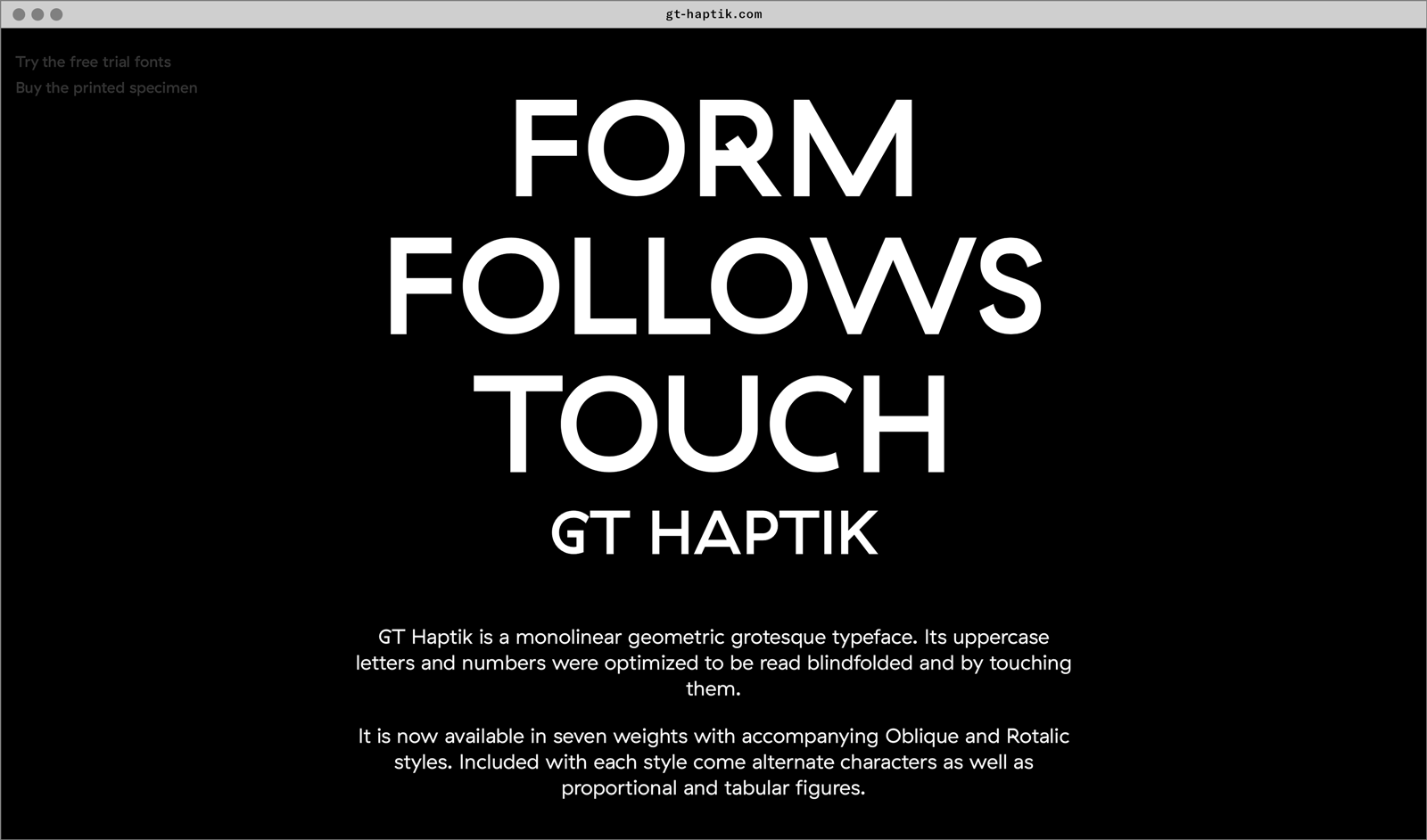

- Visit the GT Haptik minisite to discover more about the typeface family’s history and design concept.
GT Haptik in use
